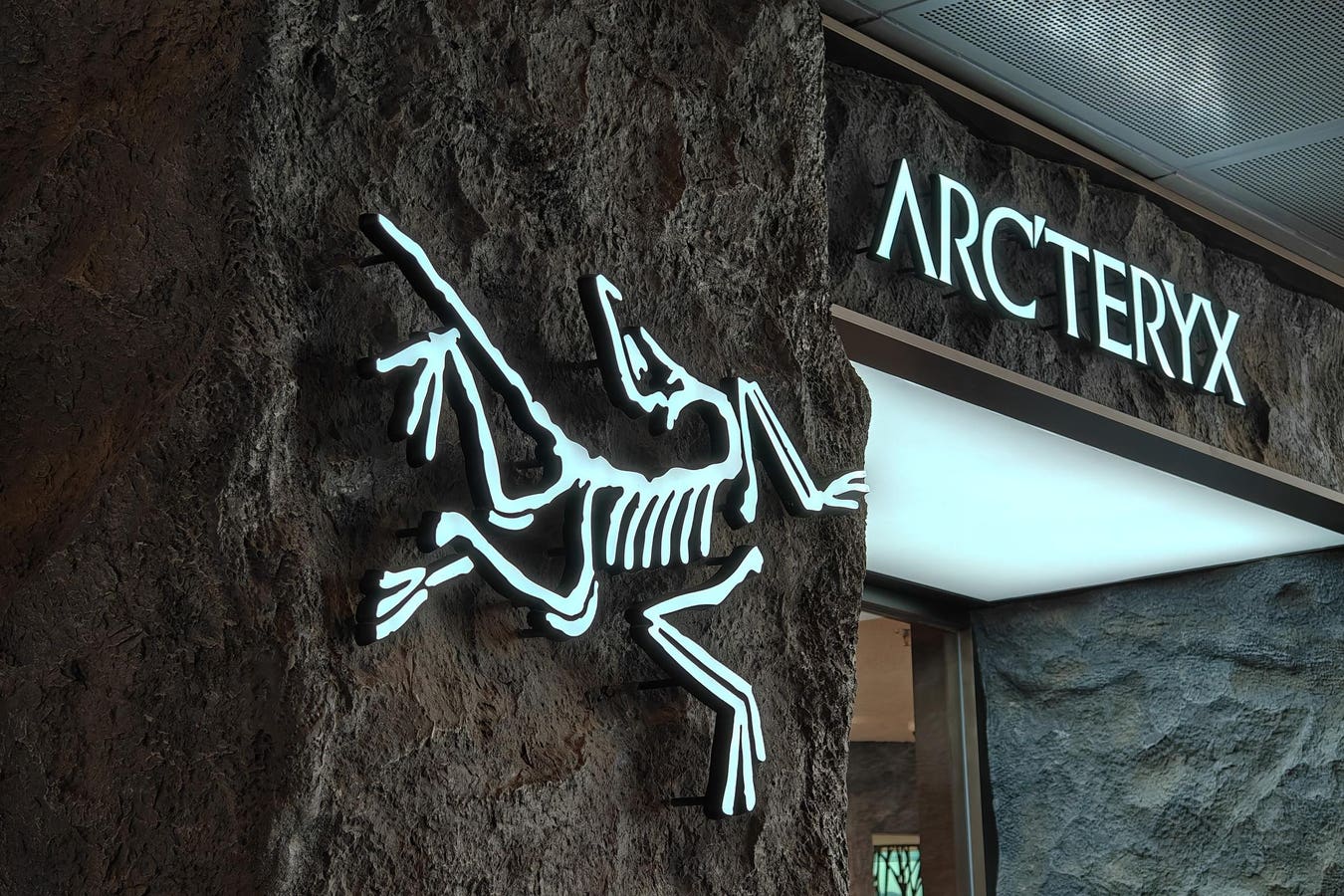Amer Sports is on a roll. In its first quarterly outing since going public in February, it gave a stellar topline performance. Revenues advanced 13% year-over-year to reach $1.2 billion, led by its Technical Apparel group offering outdoor sportswear, footwear, and accessories under the luxury-leaning Arc’teryx and the iconic Swedish Peak Performance brands.
Technical Apparel grew 44%, from $355 million to $510 million. Amer Sports other reporting segments include Outdoor Performance, specializing in winter sports, including the Salomon and Atomic brands, up 6% to $400 million, and Ball & Racquet Sports, headlined by Wilson and Louisville Slugger, which dipped 14% to $273 million. Adjusted EBITDA was basically flat year-over-year at $182 million and the company reported IPO proceeds were used to pay down $1.4 billion in debt.
While the company doesn’t report brand performance – though Arc’teryx CEO Stuart Haselden revealed it reached $1.5 billion in sales last year – Arc’teryx was repeatedly called out as the breakout star this quarter for overdelivering across all regions, channels, and categories.
“With unprecedented growth and profitability for the outdoor industry, Arc’teryx is charting new territory with a disruptive DTC model and strong competitive position,” said CEO James Zheng, reporting from Helsinki. “Importantly, Arc’teryx continues to generate outsized growth in key opportunity areas, including footwear, women’s and hard goods and accessories.”
Doubling-Down On Guidance
Powered by Technical Apparel tailwinds, most especially that of Arc’teryx, CFO Andrew Page reaffirmed year-end guidance of mid-teens growth, with Technical Apparel expected to advance over 25%.
“We delivered results ahead of our expectations led by Arc’teryx, which gives us confidence in our full-year guidance,” he shared. “The continued outperformance of our fastest growing and highest margin franchise allows us to deliver great business performance and strong returns for shareholders, while reinvesting in our key opportunities. As increased demand materializes, we are well positioned to service the elevated demand.”
Should Arc’teryx achieve that level of growth, it’s sure to take more market share from Patagonia, The North Face, REI Co-Op and other direct competitors in the $396 billion sportswear market, which McKinsey reports will advance 6.5% this year to $422 billion.
At $158 billion, North America is the largest global sportswear market but is only expected to grow 5% this year, while Asia-Pacific will more than double that, advancing 14% from $102 billion to $116 billion.
Arc’teryx is well positioned in these two largest and fastest growing markets and plays well in Western Europe too, the world’s third largest sportswear market at $69 billion in 2023.
Canadian Roots, Strong Leadership
Headquartered in North Vancouver, British Columbia with a factory in close by New Westminster, Arc’teryx was founded in 1989 focused on apparel and outdoor gear for adventurous climbers, mountaineers and Alpine sports enthusiasts. It took its name and logo from the Archaeopteryx dinosaur, an early precursor of birds.
The company was acquired by Amer Sports in 2005 and began migrating from the outback to the city, becoming a status brand in the “gorpcore,” also called the “normcore,” fashion trend where wearers adapt heavy-duty functional outdoor wear to the urban jungle.
Besides benefiting from fashion’s shifting winds, Arc’teryx has the advantage of a strong management team, including world class athletes and a few former Olympians, led by Haselden. After serving as Captain in the U.S. Army and getting an M.B.A. from Tulane, he joined Saks Fifth Avenue in 1999 as vice president strategic planning, so he knows the luxury fashion market.
In 2016, he moved to J. Crew, rising to CFO, then onto Lululemon where he held dual roles as COO and CFO, so he’s been tutored by the best in the fashion retail business, Mickey Drexler (J. Crew) and Chip Wilson (Lululemon). In fact, Wilson, as a major investor in Amer Sports, recruited him from direct-to-consumer luggage company Away after a year as CEO to join Arc’teryx in 2021.
Haselden’s varied retail experience and command of finance – “What’s great about finance is you see every part of the company to help guide and steer the company in every aspect,” he observed – makes him the perfect leader as Arc’teryx continues to ascend the global outdoor sportwear market.
Milestones
Arc’teryx is heavily invested in direct-to-consumer growth, up 46% this quarter, though it also has maintains strong footing in wholesale distribution too, which advanced 40%. But its channel mix has shifted drastically since Haselden joined the company, going from about 80% wholesale to about 70% direct-to-consumer.
After opening 16 stores in the past year, Arc’teryx currently operates 146 stores worldwide, with over 60 in China and some 50 in North America. Haselden reports China generates just over 40% of brand revenues, while North America yields just under 40%.
“We see basically the same customer segments in both markets, but they are mixed differently,” he explained. North America draws more of what he calls the “hardcore mountain athletes, putting our gear to work the way it was intended.”
China, on the other hand, has a greater mix of customers wearing the brand around town. “That’s the biggest segment in China, but both customer types are represented in both markets, just in different proportions.”
Now ready to meet those Chinese urban adventurers is a four-story flagship in Wheelock Square, described as being the “pinnacle expression of the Arc’teryx brand” and expected to generate sales over $20 million in its first year.
Part of the pinnacle expression of the brand is a ReBird Service Center, the brand’s platform for circularity, where customers can get their gear repaired to keep it in play longer or trade it in for credit.
Its newly opened three-story Convent Garden store in London is the first in Europe to include a ReBird center. Some ten stores are anchored by a ReBird center, including stores in New York, Vancouver, Toronto, Beijing, Tokyo, and Boulder, Colorado.
This quarter also launched Arc’teryx’s first footwear line with the brand’s authentic DNA, being designed, developed, and sourced directly within the Arc’teryx team. “The product has emerged as our breakout style,” the company claimed. Before that, it had leaned on sister-company Salomon to provide footwear expertise.
The company claims it’s the “best line of technical performance footwear designed for the mountain athlete.” Footwear has proved to be a good fit for the brand, with footwear growing from 6% to now 10% of sales.
Besides retailing and recycling gear, Arc’teryx also provides mountain experiences though its Academy programs, three-day learning events with professional mountain and backcountry guides sharing their expertise. It offers five Academies each year, including in Chamonix, France; St. Anton, Austria; Squamish, British Columbia; the Lake District in England and a new one was introduced in China last year.
Next Steps
After three years at the helm, Haselden is rightly proud of his team’s accomplishments, having generated over 50% growth to reach $1.5 billion in sales last year. But he feels the company is just getting started, recognizing that its brand awareness is still relatively low among everyday people on the street who aren’t part of the mountaineering community.
To build brand awareness among the urban set, it is opening stores in major population centers, like New York, Chicago, Los Angeles, Paris and London. But it also remains focused on what he calls “mountain towns,” like Whistler, Aspen, Vail, Park City and Jackson Hole.
“We want to be relevant and have a presence in those mountain town markets that keep us true to our roots and the core identity of the brand, but we need to be in the epicenters too,” he said.
“We are doubling down on all the great things that make our products amazing and the best in the world. And we’re creating this exciting guest consumer journey in our stores and our websites.
“We believe we’ve created the only truly vertical brand in the outdoor industry; that’s disruptive. We’ve gone from being a slow and steady growth company to this explosive growth that has continued over the last three years and now into 2024 and many more years to come,” he concluded.
See also:
Read the full article here





